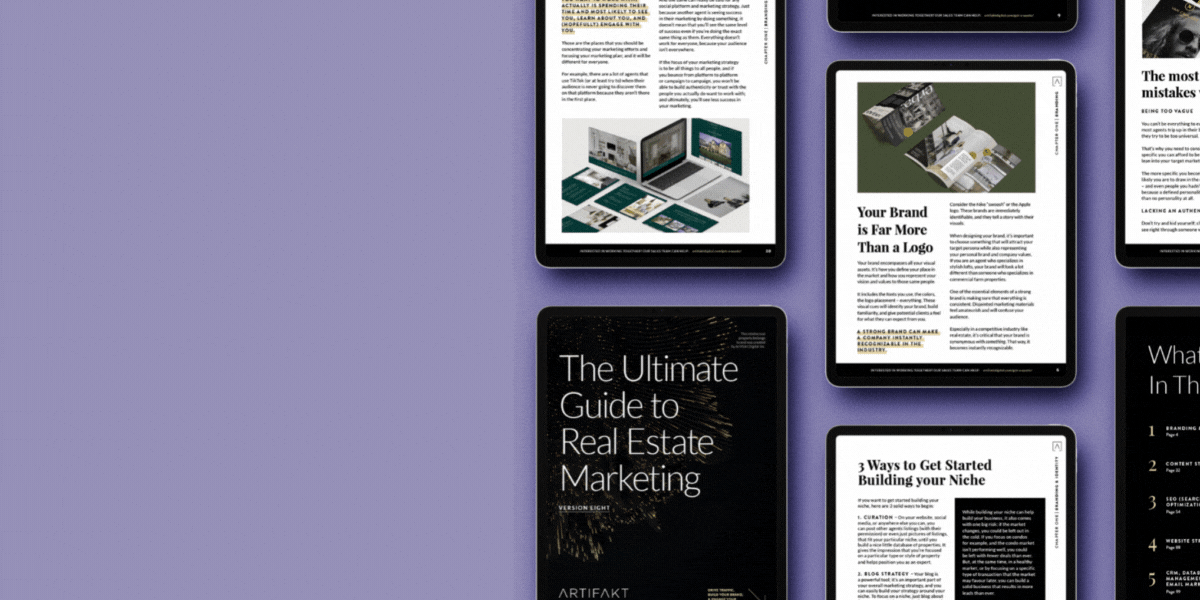How to Create an Effective Real Estate Drip Campaign

Does your inbox contain updates and offers from retailers or service providers?
If you’re like me, you’ve probably unsubscribed from a lot of mailing lists because you felt like you were being spammed. That said, when marketers get it right, they really get it right.
I’ve opened my mailbox to find coupons for items I’d been meaning to purchase. I’ve been emailed links to blog posts about topics I’d been planning to learn about. When this happens, it’s more than just coincidence.
Through drip campaigns, marketers send subscribers the information they need, precisely when they need it. They prove their value by providing relevant content over time. All the while, they track consumer responses to make smarter marketing decisions.
A great real estate drip marketing campaign will enable you to nurture your leads through carefully-targeted emails. If you do this successfully, establishing direct contact with them won’t be based on guesswork. It will be based on how urgently they need a real estate agent.
Sounds pretty good, doesn’t it? In this post, I’m going to walk you through how to do it.
SO WHAT IS A REAL ESTATE DRIP CAMPAIGN, ANYWAY?
If you’re not yet an email-marketing whiz, here are the basics.
A drip campaign is a series of emails (or “drips) sent to a list of leads through marketing-automation software. These emails contain valuable content, and they’re released at carefully-timed intervals. This approach allows marketers to build on the interest they generate with their leads.
Here’s the real magic of drip campaigns. Each lead’s response to an email—whether they open it, or click a link inside of it—will determine the next email they receive.
In other words: different recipients will get different content based on their level of interest in buying or selling a home.
This means you can set up your campaign to move leads through the marketing funnel, no matter their current level of engagement.
So you know what a drip campaign is, but where do you start?
If you’re not currently using marketing-automation, start there. MailChimp is a super popular option, and it probably integrates with your CRM.
Setting up a campaign within your marketing-automation software should be easy, since systems like MailChimp are user-friendly—and they provide comprehensive help documentation.
Designing your campaign will take a bit more thought, but it’s worth the effort. Let’s get started.
WHO SHOULD BE GETTING YOUR CAMPAIGN EMAILS?
Start by choosing an audience. If you haven’t segmented your leads into different lists, now’s the time to do it. Because you can’t blast the same content out to everyone.
Why not?
Imagine you recently bought a new house, and you’re thinking of selling your condo. How excited will you be to open an email containing a bunch of new listings? Not very. And it sure won’t seem like the agent who sent you those listings is in touch with your needs.
If you’re new to email marketing, you might want to start by splitting your list into buyers and sellers.
Your segmentation criteria will probably become more sophisticated over time. For example, leads that sign up to receive emails from your listings page are probably pretty serious about buying or selling. Based on that information, you might want to group them into one list.
You’ll probably also change the way your lists are organized based on what you learn from future campaigns. That’s the beauty of marketing.
For now, just make sure that the needs of the segment you choose match the content you’re planning to send.
WHAT KIND OF EMAILS SHOULD YOU SEND?
Next up, the meat and potatoes of your real estate drip campaign: content.
When choosing which type of content to send at each stage, consider how close your leads will be to actually buying or selling. At each step of the campaign, ask yourself: which piece of content will push these leads a little bit closer to getting in touch with me?
Here are just a few content ideas for buyers and sellers…
For Buyers
• Listings in their area
• Home-hunting tip sheets & checklists
• Market reports containing housing prices, new buyer regulations, etc.
• An introduction & link to a buyer-focused blog post
• Neighbourhood guides (amenities, events, etc.) for their areas of interest
For Sellers
• Lists of recently-sold properties & prices
• Seller tip sheets & checklists (e.g. “How to Stage a Home Effectively)
• Market reports focused on seller interests
• Seller-focused blog posts
• Video testimonials or case studies from past sellers
Tip: Newsletters and company announcements are good for leads who are no longer warm. These items prevent readers from forgetting about you, which means they could become more engaged in the future. In the case of past clients, they could spur referrals.
WHAT SHOULD YOUR EMAILS LOOK LIKE?
Let’s start with one of the most important components of an email: the subject line. If your subject line isn’t compelling, your leads aren’t going to bother opening the email. Here are a few tips for writing something that will make them want to click.
• Grab their attention
Ask a question, make a bold statement, or use language that piques their curiosity.
• Write for everybody
Keep it conversational, and use language that helps the reader understand what you mean at a glance.
• Never use the word “free”
Consumers have become desensitized to the word—plus, it can trigger spam filters.
• Keep it local
When it makes sense to do so, include the name of the city or neighbourhood that’s most relevant to your leads.
Here’s an example of a clickable headline:
This Tip Will Boost Your Home Value By 40%
At the beginning of the year, you might have tried:
What You Need to Know About Toronto’s Housing Market for 2018
Or simply:
Still Looking for a House?
WRITING YOUR EMAIL CONTENT
The point of your subject line is to get your leads to read your email. And the point of your email is to get them to view, read, or listen to your content.

Here are a few writing tips for a compelling email:
• Keep it short and to-the-point
• Make the email content match the subject line
• Convey authority
• But, keep it conversational
• Make the benefits of clicking through to your content clear
• Have a clickable call-to-action
A call-to-action (CTA) is the text that tells your leads what you want them to do. In an email, clicking these words will bring them directly to your content.
Your marketing-automation software will provide you with open and click-through rates for your campaign. This information will allow you to improve future campaign performance and better target individual leads.
Here’s a sample email, to give you an idea:
Hi [NAME]
Thanks for downloading my Complete Home Buyers Guide. You’ve just taken a big step towards finding your dream home. Congratulations!
While you’re home-hunting, there are a few things you need to know about Toronto’s housing market. I recently created a video on the subject that I think you’ll find very helpful.
Let me know if you have any questions, or if you could use some help with your search!
Many thanks,
Real Estate Agent X
HOW OFTEN SHOULD SEND OUT EMAILS?
The answer: not too often, but often enough that your leads remember you and stay engaged. It’s not the most satisfying answer. But the truth is, it just depends.

On the one hand, you don’t want to bombard leads with too many emails. We all know how that feels—and how quickly we’ll hit “unsubscribe” if we feel like we’re being spammed. So if you’re thinking about sending five emails in one week, think again.
On the other hand, if you don’t stay top of mind with your target audience, they’ll forget about you. If you’re emailing them once a month, they’ll probably start to see you as irrelevant. Then what? You guessed it. They’ll unsubscribe.
Of course, drip marketing is all about responding to individual levels of interest. Software like Mail Chimp allows you to set breaks between your emails based on the behaviour of each individual lead.
When you’re setting those breaks, put yourself in the recipient’s shoes. If you were to open an email and click the link it contained, you’d probably be pretty interested in hearing more from the agent who sent it. There’s a good chance you’d be interested enough to open another email from them within the next day or two.
That leads me to the best piece of advice I can give you about timing: test, test, and test some more.
Software like MailChimp makes it easy to A/B test your campaigns—which will help you understand what works with your audience (or audiences). And that, after all, is what marketing is all about.
Want to drive traffic, build your brand, and engage your target audience? Download our eBook: ‘The Ultimate Guide to Real Estate Marketing’. It’s a collection of some of our best marketing articles, tips, and tricks that we’ve collected over the years.





















